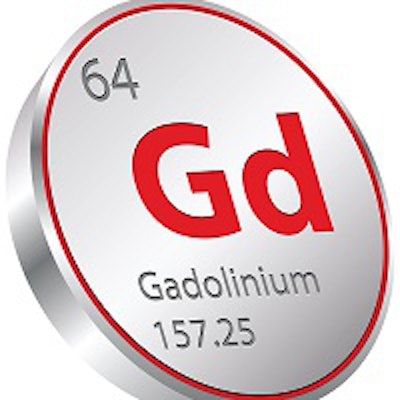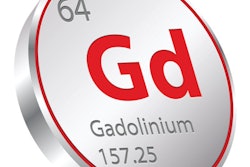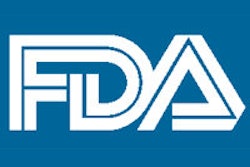
A new study has found that levels of gadolinium have been rising steadily in the waters of San Francisco Bay over the past two decades. The study attributes the rising levels to growing use of gadolinium for scientific and medical applications, in particular as a contrast agent for MRI scanning.
Levels of gadolinium in San Francisco Bay have risen sevenfold in the two decades since 1993, not long after the first MRI contrast agent was approved in the U.S., according to an article published January 7 in Environmental Science & Technology. What's more, gadolinium levels are much higher in the southern part of the bay, which is home to a number of scientific and medical institutions, than in the central and northern parts.
Environmental gadolinium levels in San Francisco Bay are not at the point where they would be considered a health risk, according to the research team led by Dr. Vanessa Hatje of Federal University of Bahia in Salvador, Brazil. But the research does come amid heightened concerns regarding long-term persistence of gadolinium in patients who have received MRI scans.
Highly toxic
Gadolinium is a rare earth element that in its free state is highly toxic to humans. Therefore, to permit its use as a contrast agent in humans, gadolinium is bound to an organic ligand via a chelation process. By thus chelating the gadolinium ion, it can be administered as a contrast medium that is then excreted relatively rapidly by the patient primarily or only via the urine after MRI scans are completed, markedly increasing the agent's safety profile.
Still, gadolinium has been associated with adverse health effects in some patients. Beginning in 2006, gadolinium-based contrast agents were linked with the development of nephrogenic systemic fibrosis (NSF), a debilitating and in some cases fatal condition. Cases of NSF largely disappeared, however, after the dissemination of clinical MRI scanning protocols that restrict the use of gadolinium in patients with impaired renal function.
Concerns about gadolinium safety rose anew in late 2013, however, after the publication of a study by Japanese researchers that found that the metal was linked to brain abnormalities and could be retained in the body long after it was injected. The revelations prompted a new probe by the U.S. Food and Drug Administration (FDA) into the significance of retained gadolinium, which is still ongoing.
The research paper published this month doesn't address safety issues, but it does illustrate how pervasive gadolinium has become in the environment. Hatje led a team of researchers from the University of California, Santa Cruz, who performed the longitudinal study of gadolinium levels in San Francisco Bay from 1993 to 2013. The study period began five years after the first gadolinium-based contrast agent was introduced in 1988, the researchers noted.
The group analyzed data from water samples acquired from a variety of locations around San Francisco Bay. The samples were collected as part of the area's Regional Monitoring Program, a program that began in 1993 to measure variations in water quality in the bay.
At the start of the program in 1993, the minimum concentration for gadolinium was observed to be 0.0232 nmol kg-1. By 2000, that level had doubled to 0.0491 nmol kg-1, and by 2013 it reached a maximum of 0.1714 nmol kg-1. Despite the increase, the researchers noted that these levels are "well below peak concentrations," estimated to be 362 nmol L-1, that could pose harmful effects on aquatic ecosystems.
The group also measured the spatial distribution of gadolinium and found that concentrations were 50 times higher in the southern part of the bay than in the central part. The researchers attributed this to several factors, ranging from shallower water in the south bay to the high concentration of medical facilities using gadolinium-based contrast agents in the Silicon Valley area.
"Due to their exceptionally high stability, these [gadolinium] complexes are not removed by commonly used wastewater treatment technologies and pass through conventional wastewater treatment plants into surface waters that reach coastal systems," Hatje and colleagues wrote.
Hatje is an oceanographer at the Federal University of Bahia who performed the research in 2013 while working in the lab of Kenneth Bruland, PhD, at the University of California, Santa Cruz. She has been particularly interested in man-made contaminants such as rare earth elements used in technology-heavy activities.
While Hatje believes that her study is the first to track anthropogenic gadolinium -- gadolinium resulting from human activities -- over such a long period in San Francisco Bay, other studies have detected concentrations of the metal in coastal waters around the world, beginning with Bau and Dulski in 1996. Despite the fact that about half of annual MRI scanner sales are in the U.S., there have been few studies of gadolinium concentrations in U.S. waters, she said.
Hatje and colleagues conclude by stating that "new public policies and the development of more effective treatment technologies may be necessary to control sources and minimize future contamination" by rare earth elements such as gadolinium. Indeed, in Australia the use of advanced water treatment plants with reverse-osmosis membranes has been found to remove 99% of man-made gadolinium from effluent water.
Now that she is back in Brazil, Hatje plans to continue her research studying the persistence of rare earth elements in coastal waters, such as in Brazilian cities near estuaries and bays. Some of these do not have wastewater treatment available, offering the opportunity to study gadolinium concentrations in these areas.
What does it all mean?
The question is, how should the results of Hatje et al be interpreted? The researchers point out that at the levels detected in the study, the gadolinium in San Francisco Bay is well below the level at which it would pose harmful effects to an aquatic ecosystem.
But such a statement downplays the pervasiveness of the anthropogenic gadolinium issue, according to MRI safety expert Dr. Emanuel Kanal, director of MRI services at the University of Pittsburgh (Kanal was not involved with the new paper). Hatje's paper simply confirms in a new body of water other research that has found gadolinium concentrations at other locations around the world -- even reservoirs and tap water.
In fact, researchers have analyzed tap water with spectroscopy and have been able to identify traces of specific formulations of gadolinium-based contrast agents, Kanal said. What's more, the rate of increase in anthropogenic gadolinium is growing -- and few in radiology are aware of it because papers like Hatje's are usually published in journals focusing on sewage processing rather than medicine.
Anthropogenic gadolinium is an important problem for radiology to recognize, Kanal believes, because it raises questions about what had been a key belief in the debate over gadolinium safety: namely, that only people getting MRI scans are being exposed to gadolinium.
In actuality, anyone who turns on the tap and drinks a glass of water is likely being exposed to some level of gadolinium.
"I used to teach that gadolinium is an element to which humanity is not routinely exposed," Kanal said. "I can't teach that anymore."



















